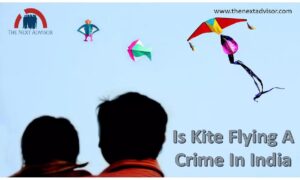Hey friends, India’s Independence Day has just passed away, which all of you must have celebrated with great enthusiasm. But along with celebrating Independence Day, you must have seen Some new things abthe out Indian Flag with Law. I would like to put your attention on some new things about the Indian Flag with law. Let us see Some new things about the Indian Flag with Law.
When we will talk about the Indian flag, whenever we talk about the flag of any country, it appears to be the independence of that country and its Sovereign. The identity of any country is the flag of that country and the flag of India is called the Tricolor.
Today I will tell you some new things about the Indian flag with the law that you hardly know, but as a citizen of India, all of you should know these things. So the flag of India represents the long struggle of the citizens of India as well as the struggle of the citizens of India for Independence of India. Pandit Jawaharlal Neheruji as the former Prime Minister of India said that this flag is a symbol of freedom not only for India but also for the citizens of India. Meaning that the Indian flag shows the independence of both the country and the countrymen.
Some New things about the Indian Flag with Law
You must be aware that the design of the Indian flag tricolor was prepared by Pingali Venkayya, which was recognized by the Indian constituent Assembly on 22 July 1947. Let us tell you that the design of the flag of India was made for the first time between 1904 to 1906 by a disciple of Viveka Swami Vivekananda, whose name Nivedita, who is also called Bhagini Nivedita.
There were two colors in this flag Red and Yellow, the red color resented the freedom struggle and the yellow color resented the victory. In this flag Vande Mataram, lotus flower, and India’s thunderbolt were used in the Bengali language. Then in 1906, another flag was made which is called the Kolkata flag or lotus flag.
Three colors orange, yellow, and green were used in this flag. It is believed that it was designed by Sachundra Prasad Bose and Sukumar Mitra. This flag was hoisted on 7th August 1906 to show the unity and integrity of India. In 1907 another flag was prepared which was designed by Madam Bhikaji Kama, Vinayak Damodar Savarkar, and Shyamji Krushnavarma.
This was the first flag to be flown on foreign soil. the flag consisted of holden saffron at the top and red at the bottom. In 1917, Bal Gangadhar Tilak made a flag with the Union Jack on its head. This flag had five red and four green strips. It also had the figure of Sapta Rishi Nakshatra which is considered sacred to Hindus. Another flag has been designed in 1921 on the insistence of Gandhiji. We get to read this in History and in many books. White, Green and Red were included in this flag.
Some new things about the Indian flag with law.
The white color was included at the top, the Green color below it, and the red color at the bottom. It was believed that the white color of peace the Green color of the Muslims, and the Red color represented Hindu and Sikh communities. The spinning wheel was put on this flag as a collective representation of all these. Another flag was made in 1931 in which saffron color was used instead of red.
Finally, in 1947, a committee was formed under the chairmanship of Dr. Rajendra Prasad, which is called the flag committee this committee recognized the present flag, which is in three colors, saffron color, White, and Blue, and which has a wheel in the middle which is taken from the Asgfoka Pillar. legally, the National flag of India should be made of Khadi. In 2006, the Supreme Court declared the right to wave the National flag a fundamental right in Article 19(1)A of the Indian Constitution.
Hoisting the national flag is a fundamental right. Khare said that under Article 19(1) (a) of the Constitution of India, citizens had the fundamental right to fly the national flag on their premises throughout the year, provided the premises do not undermine the dignity of the national flag.
The Flag Code of India is the instructions given regarding the hoisting and use of the Indian flag. This Code was introduced in 2002, After a seven years-long legal battle fought by Naveen Jindal, the Supreme Court had ruled that every citizen has the right to hoist the national flag (Jindal also wins government nod for flying tricolor at night). The rules for hosting the national flag have been fixed which is very important t follow. If a person violates the rules of hoisting the tricolor, he can be punished with imprisonment of three years under the Flag Code 2002.
The Flag Code of India 2002 allowed the unrestricted display of the tricolor as long as the honor and dignity of the flag were being respected.
• The flag code did not replace the pre-existing rules governing the correct display of the flag; it was, however, an effort to bring together all the previous laws, conventions, and practices• It mentions that the tricolor cannot be used for commercial purposes, and cannot be dipped in salute to any person or thing
• It further states that whenever the flag is displayed, it should be distinctly placed and should “occupy the position of honor”. . Among the things which are not allowed is putting up a damaged or disheveled flag, flying the tricolor from a single masthead simultaneously with other flags, and no other object, including flowers or garlands, or flag should be placed on the same height beside the tricolor or above it. Moreover, the tricolor should be rectangular in shape and the length-to-width ratio should always be 3: 2.
• The national flag should always be made of hand-spun and handwoven wool or cotton or silk khadi bunting
Some new things about the Indian Flag with the law
-
Restrictions on the display of the Tricolor according to the flag code? •
Divided into three parts –
1. a general description of the tricolor,
2. Jules on the display of the flag by public and private bodies and educational institutions,
3. rules for display of the flag by governments and government bodies.
So these are some new things about the Indian Flag with law.
























